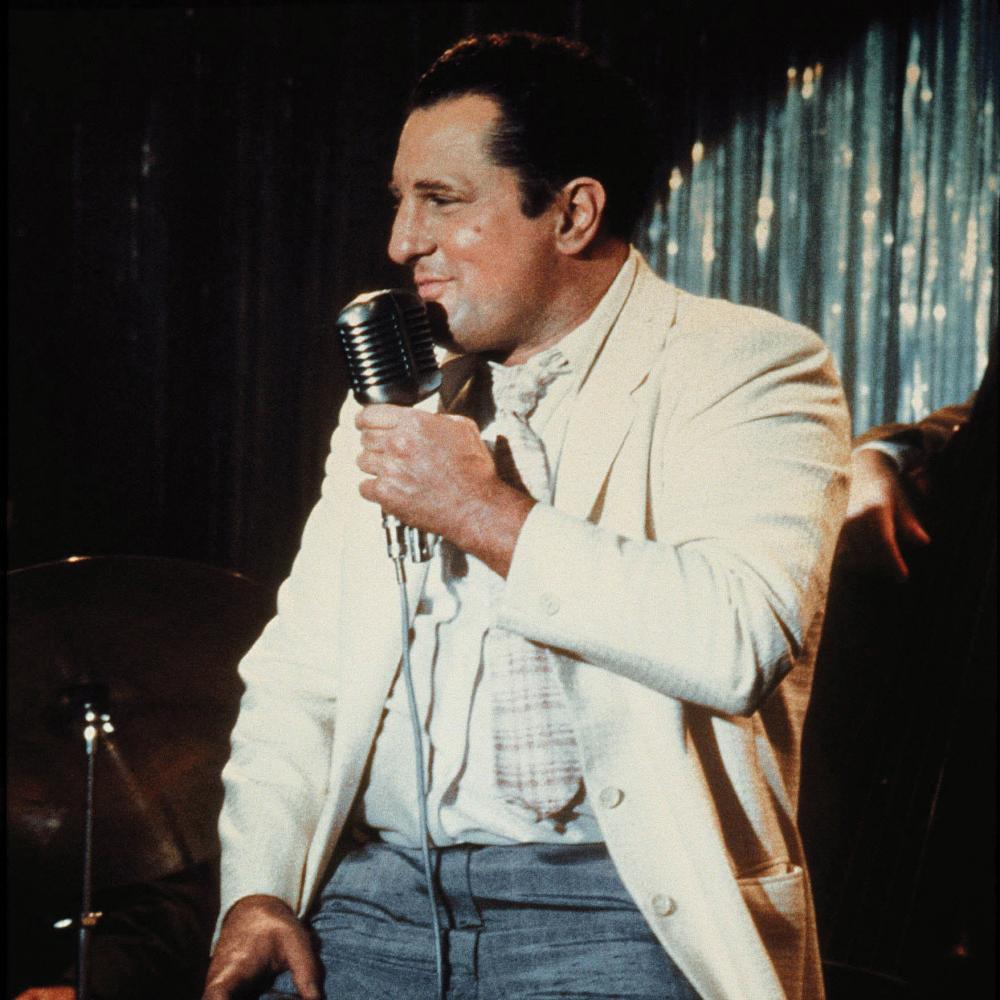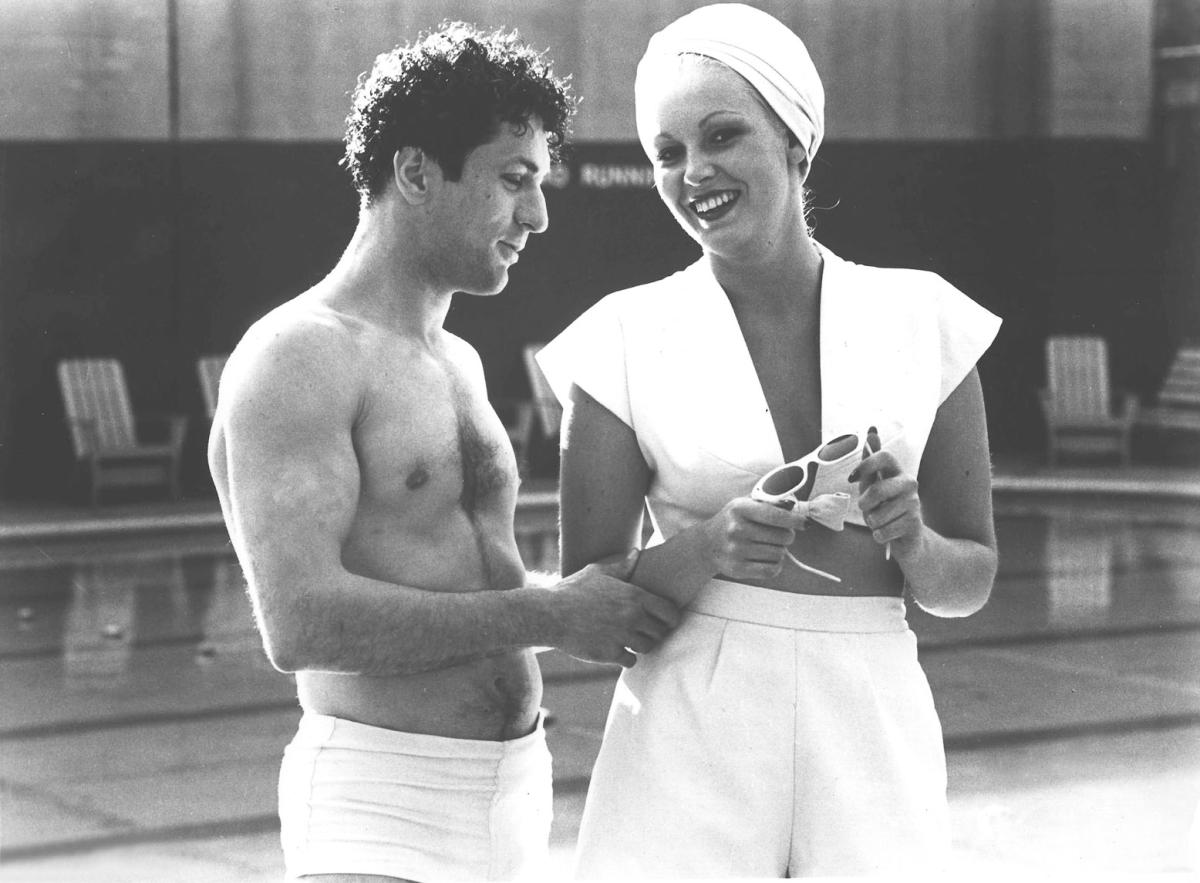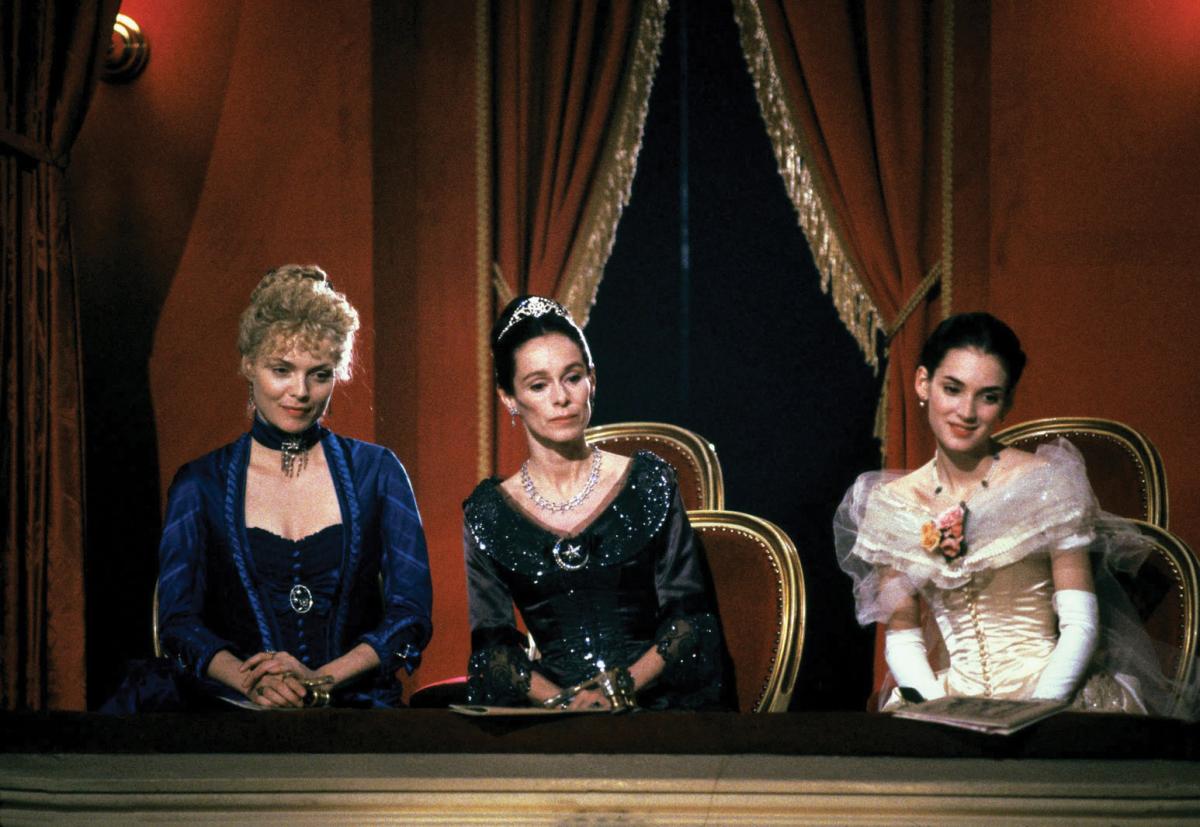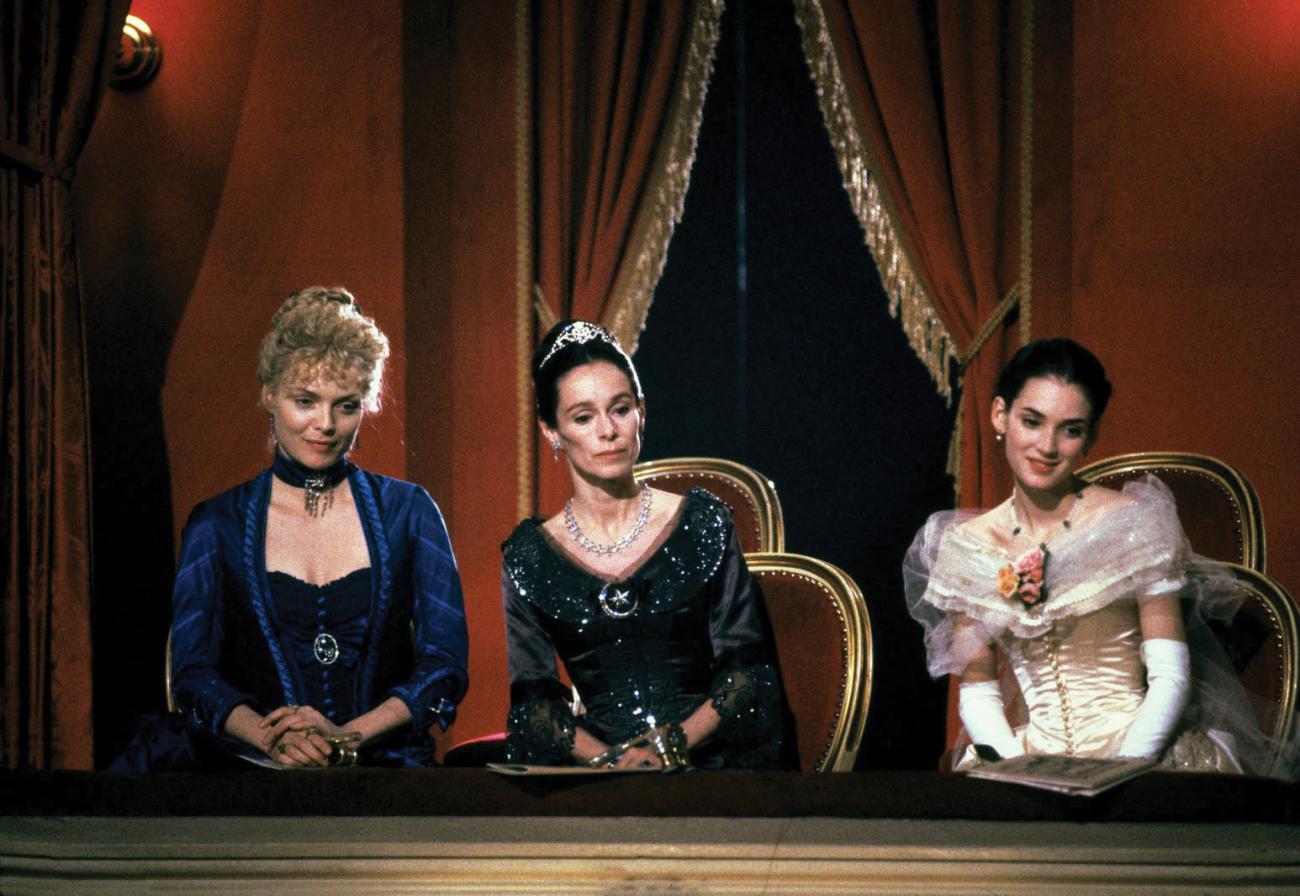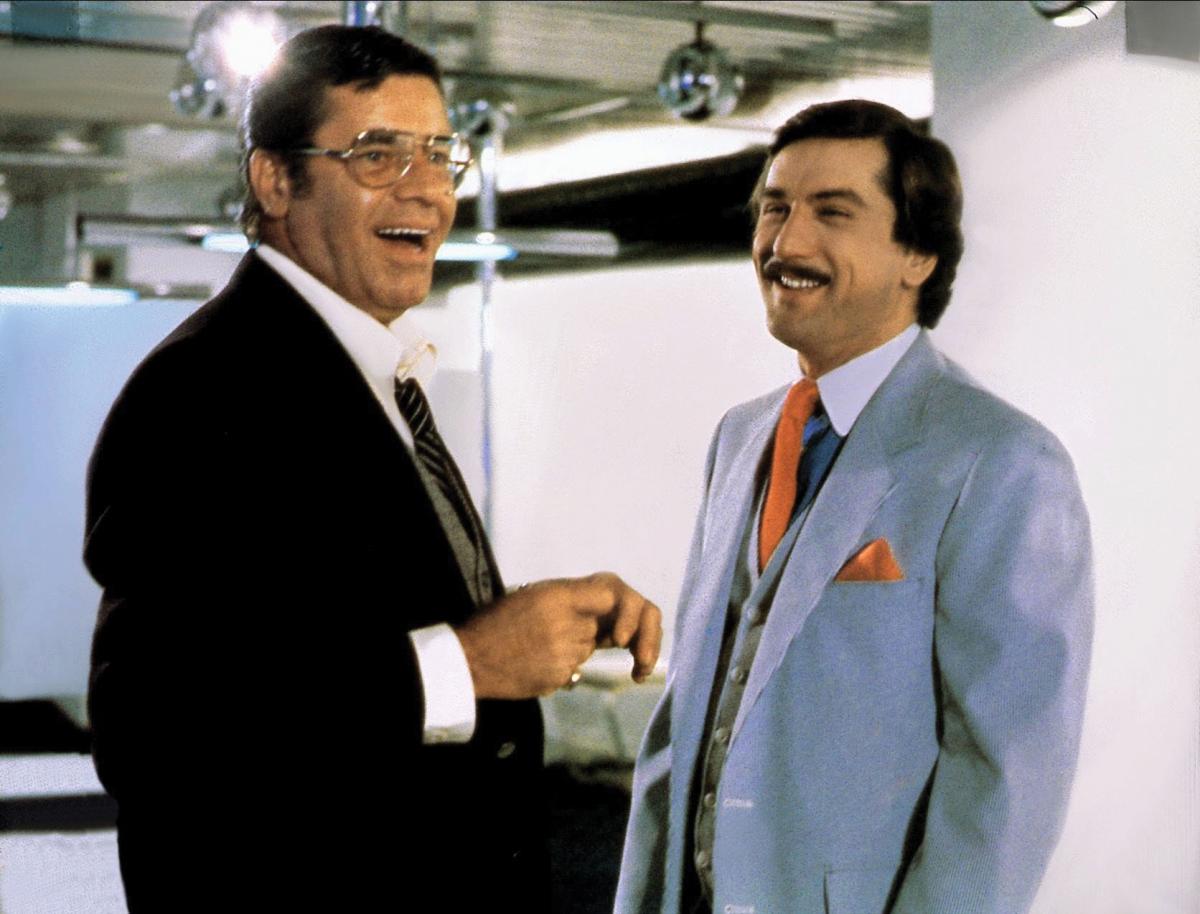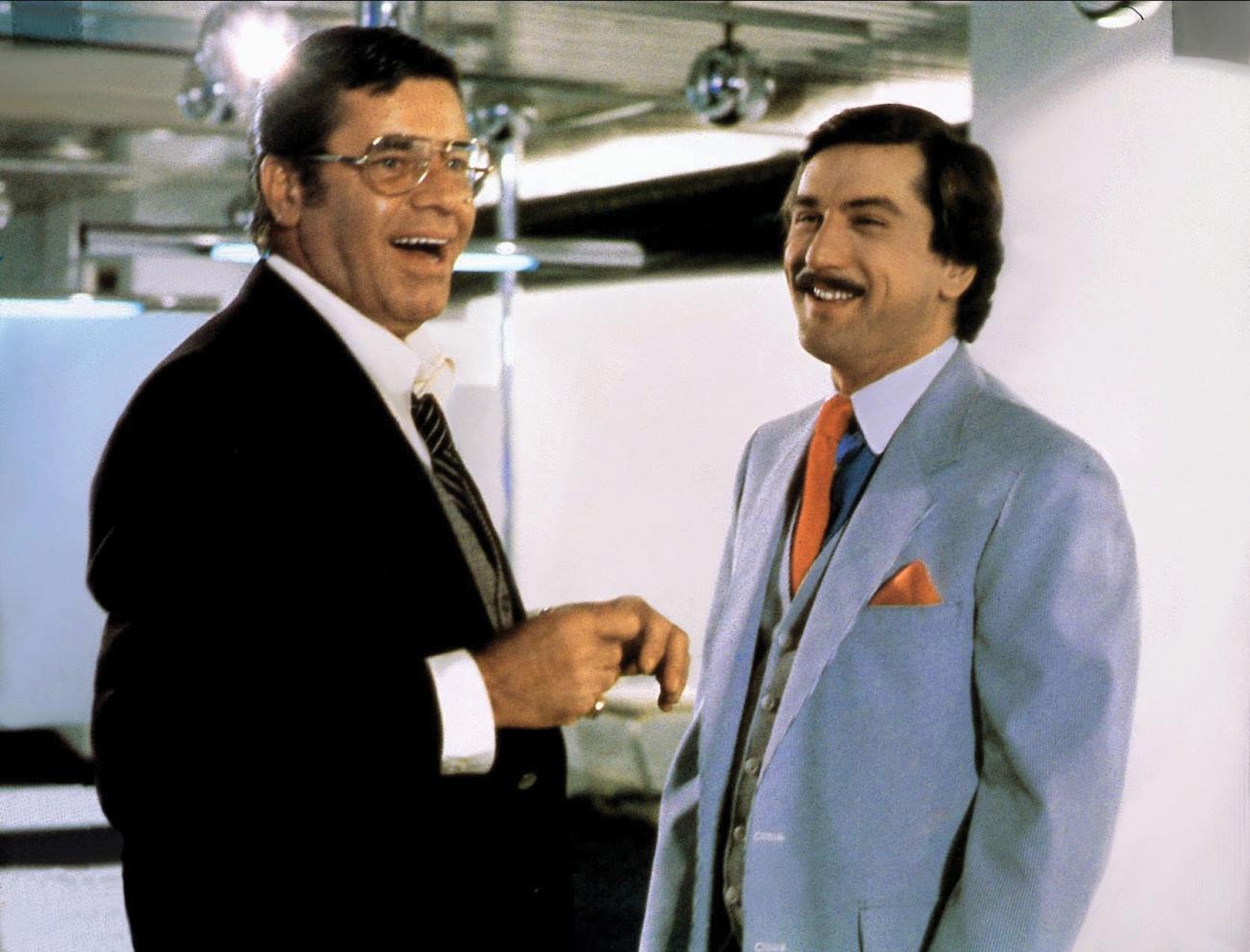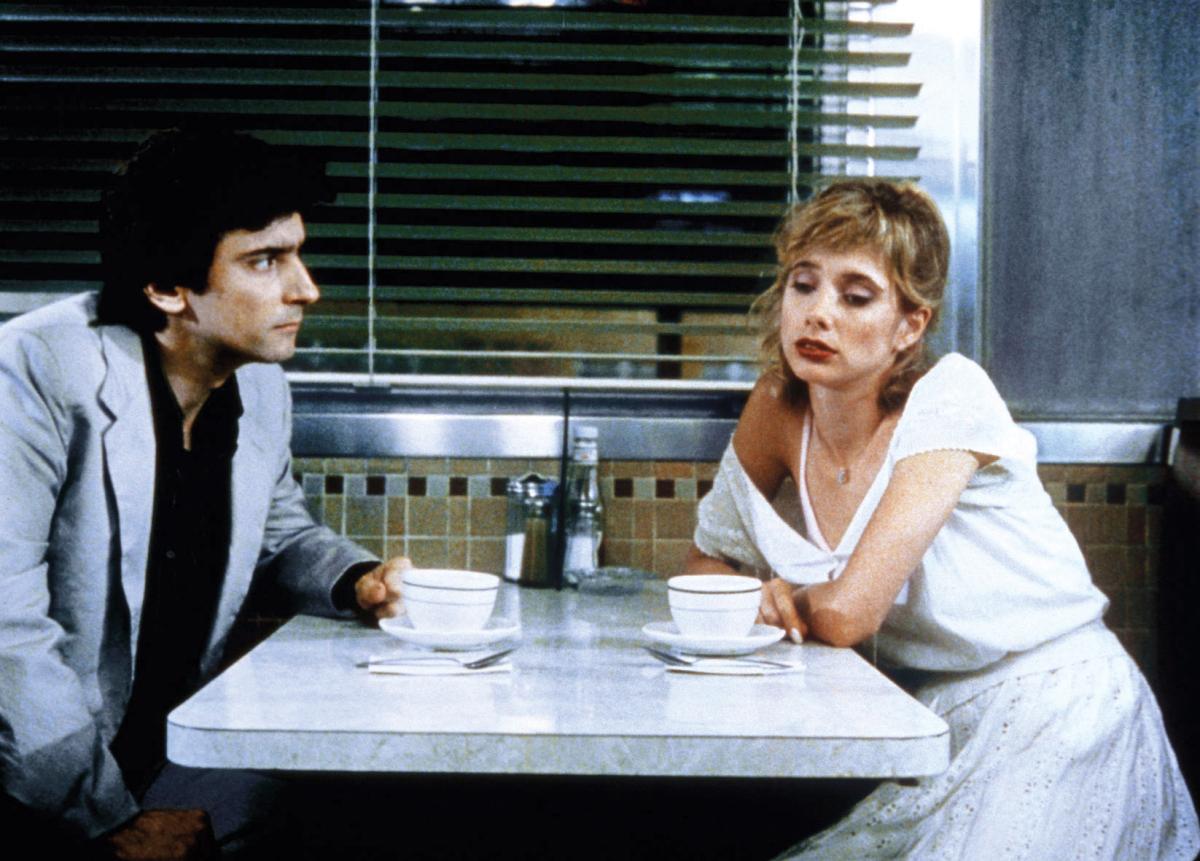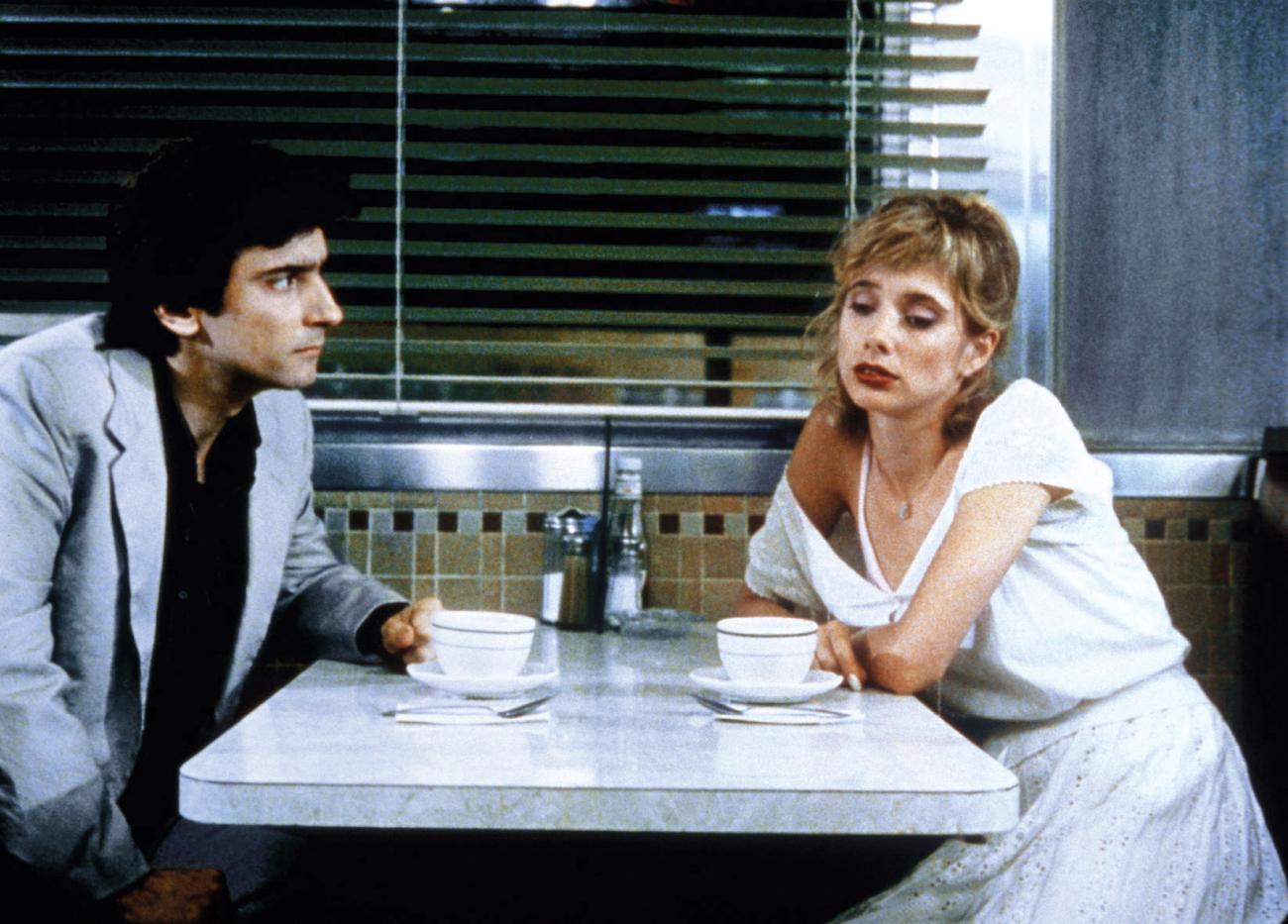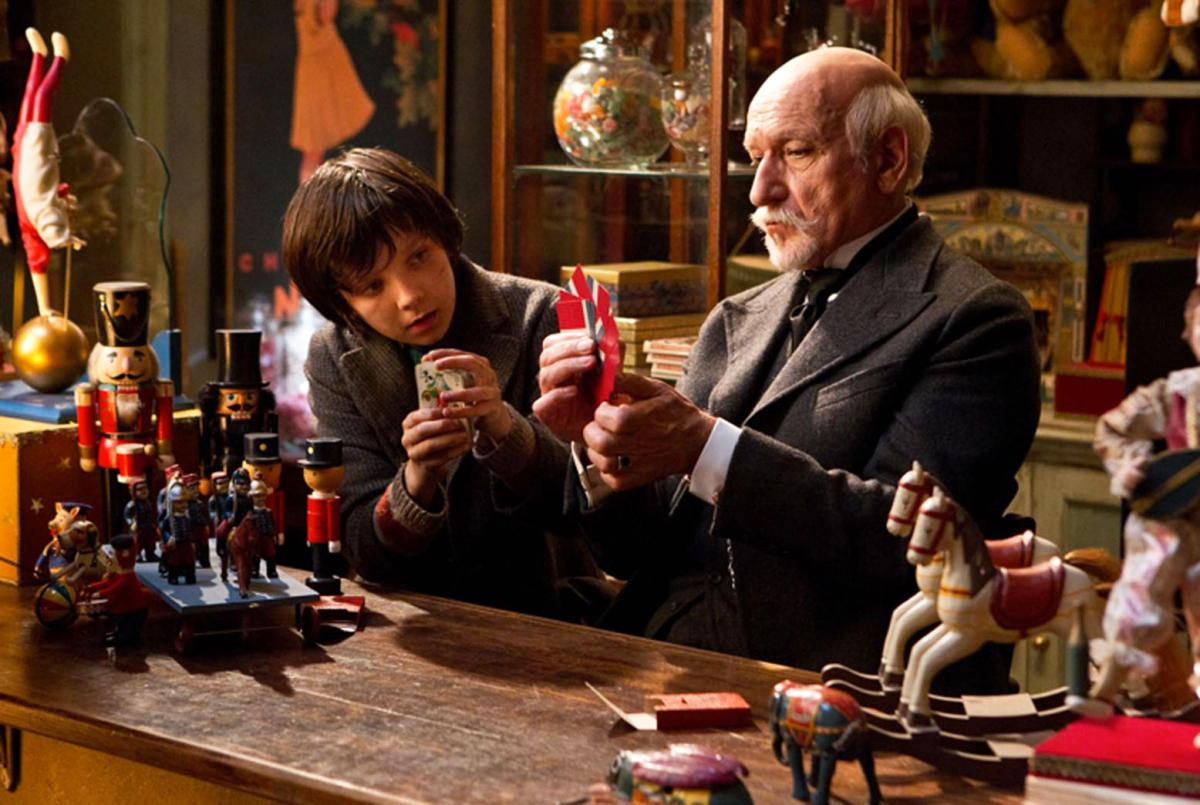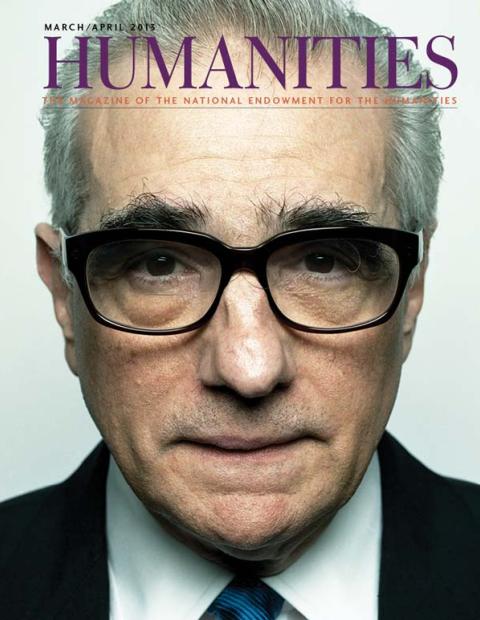At the end of Raging Bull, the 1980 movie directed by Martin Scorsese, its protagonist, the onetime boxer Jake LaMotta, is shown in a nightclub dressing room, preparing for a show. The Bronx-born LaMotta, a not particularly articulate man, is now in the middle of an unlikely second career as an entertainer and reciter. The sign outside the venue he’s working, the Barbizon-Plaza, advertises “An Evening With Jake LaMotta, featuring the works of Paddy Chayefsky, Rod Serling, Shakespeare, Budd Schulberg, Tennessee Williams, Tonight.” The scene, so complex in its poignant artistic resonances (LaMotta, played by Robert De Niro, haltingly repeats the “I coulda been a contender” speech originally spoken by Marlon Brando in Kazan and Schulberg’s On the Waterfront) is a justifiably famous one. What follows has tended to baffle, and even confound, many of Raging Bull’s admirers, and certainly critics who reacted skeptically to the movie. A series of end titles, in white typeface that fades to gray, quote the New English Bible’s Gospel of John, chapter nine, verses 24 to 26:
So, for the second time, [the Pharisees] summoned the man who had been blind and said:
“Speak the truth before God. We know this fellow is a sinner.”
“Whether or not he is a sinner, I do not know,” the man replied.
“All I know is this: once I was blind and now I can see.”
After which comes the source citation, and then the movie’s dedication:
Remembering Haig P. Manoogian, teacher.
May 23, 1916–May 26, 1980
With Love and resolution, Marty.
Manoogian was a professor at New York University, an architect of the school’s film program, and an important mentor to Scorsese, who studied and, for a time, taught at NYU.
How does the story of the Pharisees, the unnamed Christ, and the healed man connect to LaMotta, a brutish, sexually obsessive, sometimes relentlessly self-destructive boxer who, in the picture’s final shot seems to have achieved, if not serenity, at least some normative sense concerning who he is and where he’s at—a state he is never in at any other point during the galvanic film? Certainly, he doesn’t represent the Pharisees. Is he the man who once was blind but now sees? Or is he the “sinner ” who is also the savior? In an interview with Michael Henry Wilson, printed in the Cahiers du Cinéma volume Scorsese on Scorsese (the second discrete book to bear this title), Scorsese says, “Jake LaMotta, at least as he appears in the film, is someone who has allowed me to see more clearly.”
Which is not to say that Scorsese believes Jake LaMotta to be a savior, although biographical accounts of the director, and many of his own words, testify to the notion that making Raging Bull helped save Scorsese’s life, personally and professionally. And I believe that in that gospel passage, and the dedication that follows it, there’s a microcosm of what Scorsese has always been about as an artist. Knowing and not knowing. Seeing and not seeing. Transformation, and, finally, love and resolution.
“Whether or not he is a sinner, I do not know.” Scorsese’s films are as occupied with sin as you might expect from an urban Italian-American Catholic who once considered becoming a priest. But they do not judge, at least not in the conventional sense. Scorsese, since even before his breakthrough feature Mean Streets, has always been a very emphatic director. “I read in the Village Voice that Jim Jarmusch, who made Stranger Than Paradise and Down by Law said something like, ‘I’m not interested in taking people by the hair and telling them where to look.’ Well, I do want them to see the way I see,” he told interviewers Ian Christie and David Thompson in the late eighties. “Walking down the street, looking quickly about, tracking, panning, zooming, cutting and all that sort of thing.” In Scorsese’s work, the camera eye, and all the manipulations that can be applied to celluloid, constitute a state of being, a fierce assertion of the act of seeing itself.
Scorsese is a narrative filmmaker, not an abstract one, but were he to work in the latter mode I suspect he would show us the same thing he shows in almost all of his films: closely observed transformation, its consequences, its sometimes ironic lack of consequence. In Taxi Driver, after its climactic bloodbath and the peculiar elevation of the lonely psychotic Travis Bickle into a vigilante hero, there’s a smeary impressionistic shot of Bickle in his cab, and the motion speeds up as Bickle adjusts his rearview mirror. Then comes the sound of an instrument recorded backward in Bernard Herrmann’s emotionally trenchant score, telling the audience that the “catharsis” signaled by prior events was no catharsis at all, and that Travis is back at a personal zero that may lead to another catastrophe. It’s a transformation in negative. At the end of Raging Bull, Jake LaMotta, once a prime physical specimen, appears bloated, with a cauliflower nose and puffy slits for eyes, but he has gained some sense of himself as a person. “I’m an average nobody. I get to live the rest of my life like a schnook,” Henry Hill (Ray Liotta) complains at the end of Goodfellas, having fulfilled his dream of becoming a gangster only to be brought down not just by the law, but by his own piggish, unheeding excess. The aristocratic Newland Archer (Daniel Day-Lewis), blinded momentarily by a ray of sunlight reflected off a pane of glass, understands in that simultaneously painful and blissful flash all that he has sacrificed and lost in The Age of Innocence. A small boy plucked from poverty is told that he is the spiritual leader of his people in Kundun. God on earth opts for the life of an ordinary, carnal man, only to reject that vision and accept that he must give up his entire life in The Last Temptation of Christ. Teddy Daniels quietly accepting the end of his life as a self-described “monster ” in Shutter Island . . . the list goes on. Hugo, Scorsese’s most recent fiction feature, a film he made for his young daughter, Francesca, features a more overtly hopeful transformation: an orphan accepted into, made a member of, a family that his intervention helped heal. While there’s real anguish in his films, and sometimes genuine despair, with the exception of the corrosive (and, in a way, genuinely cathartic) The King of Comedy, Scorsese avoids nihilism as conscientiously as he avoids overt judgment.
Scorsese has been called a chronicler of damaged masculinity. Men who can’t stop hurting themselves or others have figured strongly in his work from the very beginning. It’s a pretty straight line that connects Teddy Daniels, the cop in 2010’s Shutter Island who keeps replaying the same scenario over and over, trying to create a different outcome and failing miserably and being left only, in a very real sense, to his own mad self, and the unnamed protagonist of Scorsese’s 1967 short film The Big Shave, a young handsome fellow who stands before a bathroom mirror, all lathered up, and begins to shave, but only succeeds in cutting open his face, again and again, bleeding all over the white sink (“Whiteness . . . Herman Melville,” reads a waggish credit line), oblivious, as Bunny Berigan’s rendition of “I Can’t Get Started” plays on the soundtrack. In between, there’s LaMotta, of course, the terrifying Bickle, and also Charlie of Mean Streets and the absurdist variations on the theme, Rupert Pupkin in The King of Comedy and Paul Hackett in After Hours. But, while these characters and the havoc they wreak provide the text, the strong subtext is in the way Scorsese sees them, or more to the point, the way he makes us see them. Whether in a virtuosic tracking shot through the Copacabana in Goodfellas that depicts the high life of young gangsterdom in a way that one can’t help but envy even as one apprehends its essential vulgar idiocy, or the fast-cutting shots on physical impact that simulate each punch that LaMotta lets himself take in the boxing sequences of Raging Bull, Scorsese’s movies demand, in the most compelling way possible, a certain quality of attention.
“Look, with all your eyes look.” The great writer Georges Perec made that line from Jules Verne’s Michael Strogoff the epigraph for his monumental novelistic examination of existential minutiae, Life: A User’s Manual. It could just as well go on the front of any Scorsese film. (The closest he’s come is the all-caps title card “THIS MOVIE SHOULD BE PLAYED LOUD” at the opening of his rock concert picture The Last Waltz.) Because in a Scorsese movie, it is the looking, the seeing, the head-on quality of it, that makes up the morality of the work. The ability to confront.
As for love: The love of film, too, shows in every frame of a Scorsese picture, and it’s also manifested in the work he does in film preservation and restoration via his organizations the Film Foundation and the World Cinema Foundation. He began his film preservation crusade in 1980, touring the world and adamantly protesting that one reason he shot Raging Bull in black and white had to do with the discovery of catastrophically fading color stocks. And resolution: It’s in every film he makes, for whatever reason. His recent spate of big-budget biopics and genre pictures has compelled some less-than-resolute critics to complain that Scorsese ought to go back to making personal films. But what’s impersonal about the anxiety of the Howard Hughes that Scorsese depicts in The Aviator? It’s arguably true that the movie for which he won his only Best Director Academy Award was one that he, rather ironically, seemed most emotionally disconnected from. But the direction of The Departed seems a mordantly playful commentary on the state of the crime movie from a man who’s absorbed everything there is to know, pretty much, about the genre: nothing impersonal about that. Nor is there anything impersonal about the way he frames and shoots a dust mote, lit up by a ray of sunlight just so it pops in breathtaking 3-D in Hugo. “Cinema is truth 24 times per second,” Jean-Luc Godard famously pronounced. Scorsese’s definition seems, at first, more pragmatic: “Cinema is a matter of what’s in the frame and what’s out.” But when you take into account the pains taken in making that final distinction in a Scorsese picture, you understand that it’s a complex proposition indeed.
As for resolution, in his introduction to the posthumous second volume of the autobiography of his friend and mentor Michael Powell—a director who once announced to an interviewer, “I am cinema,” and wasn’t exaggerating (see The Red Shoes, The Small Back Room, Peeping Tom, and scores of others)—Scorsese noted of Powell: “He never wavered. That was one of his greatest qualities and, for me, his most cherished legacy. He was steadfast. He reassured that in me most of all: You believe in an idea, a concept, a story, a statement you want to make, and that’s the foundation of the film. You do not waver from it. Whether it takes you all the way down, whether it takes you to the edge, then pushes you off, even to the point of not making another picture for thirty years, you do not waver. You’d better make that picture, even if you know it’s suicide.” Scorsese wrote these words from the set of 1995’s Casino, one of his most challenging productions, and one of his most difficult films. Scorsese’s current professional life, at age seventy, seems, to judge from the trade gossip, positively fraught with options. But his resolution is such that he makes every film as if it could be his last.

